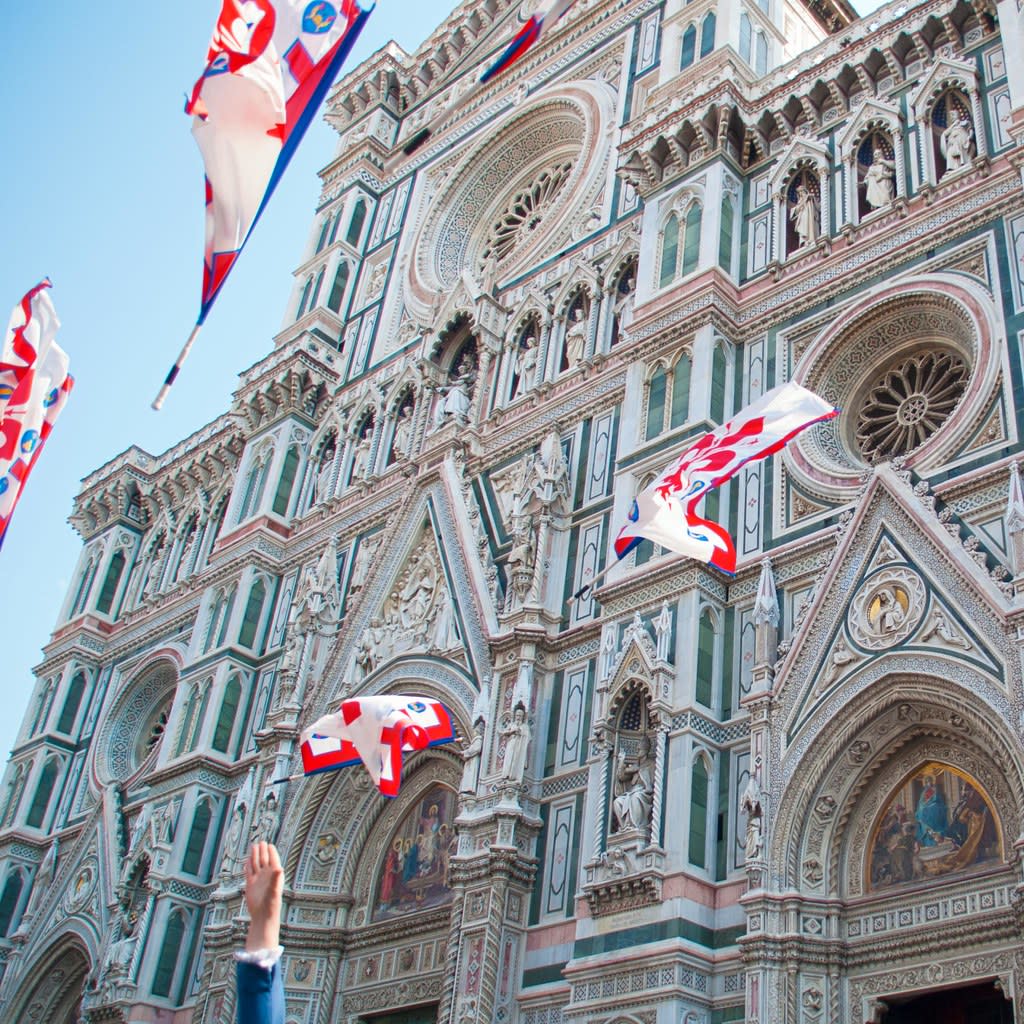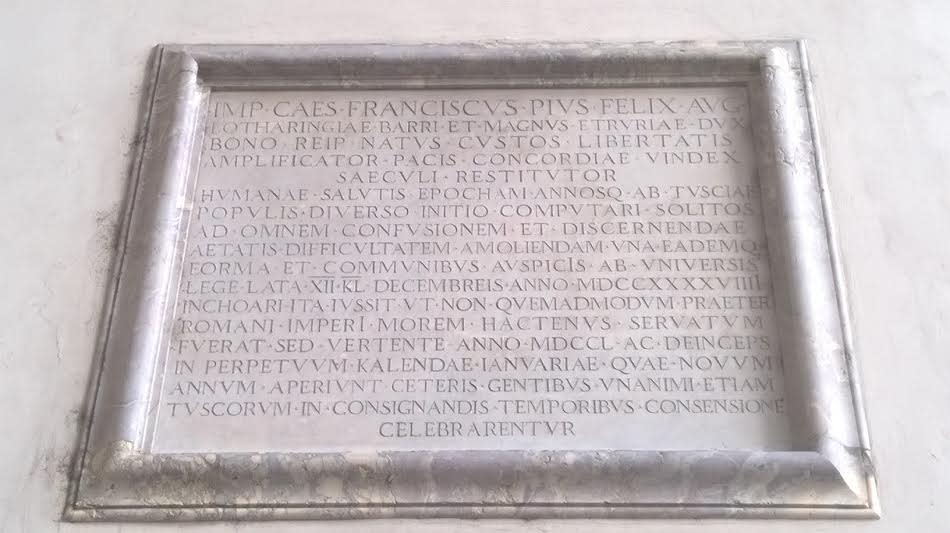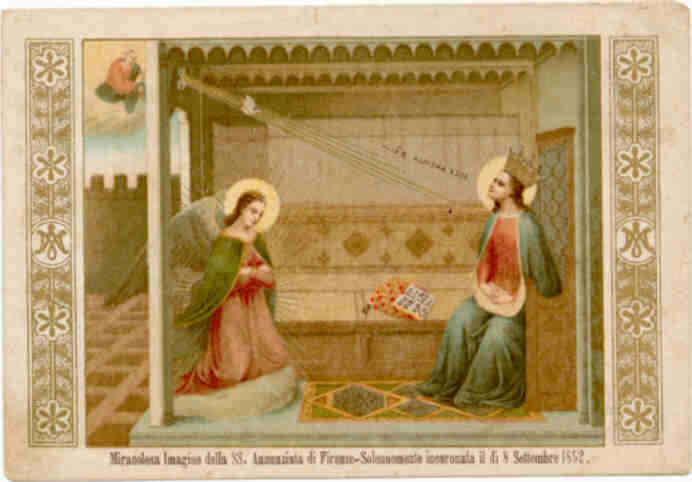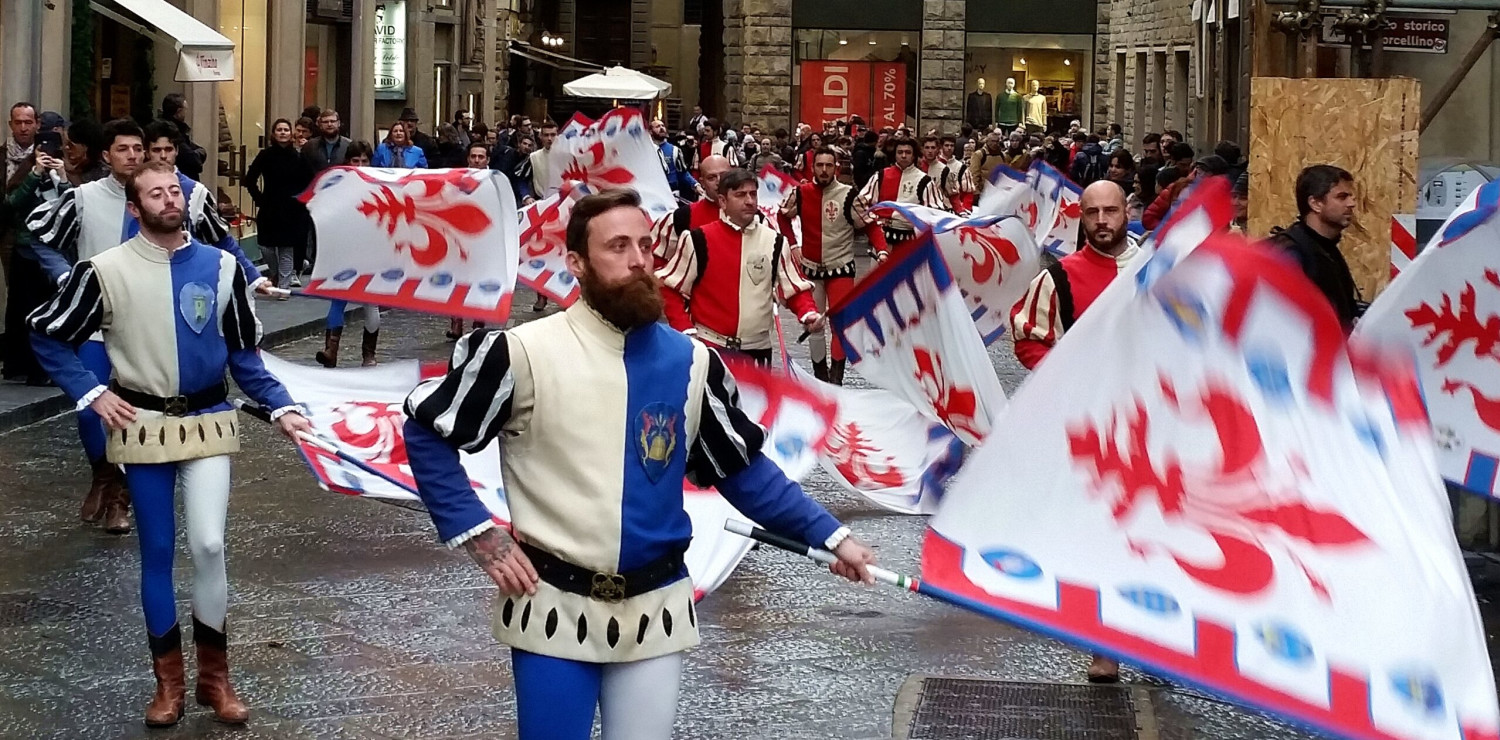Florentine New Year. What it is and why it is celebrated on March 25
Our city has its own start of the year: we reveal its origins and special initiatives to celebrate
Many people do not know that on March 25 the city of Florence celebrates the Florentine New Year. The City has included this date in the annual calendar of popular festivals and traditions and official celebrations.
 Il Corteo del Capodanno Fiorentino
Il Corteo del Capodanno Fiorentino From the Middle Ages until 1750, in fact, this was the day on which the Church recalled the announcement of the Incarnation received from the Virgin Mary and was taken as the beginning of the civil calendar.
In the Tuscan capital this was the date on which New Year's Day was celebrated, even when in the rest of Italy the Gregorian calendar was already in force, according to which the year began on January 1st.
While the states conformed to this religious dictate, Florence, linked to the Marian cult, decided not to abandon the feast of March 25. This recurrence for the Florentines will last for 168 years and will cease in the month of November 1750, when a decree of Grand Duke Francis II of Lorraine imposed the use of the Gregorian calendar, fixing also for Florence the beginning of the year on January 1 (under the Loggia dei Lanzi there is the plaque that commemorates the decree of the suppression of the feast).
 La targa di Loggia Lanzi che decreta la soppressione del Capodanno Fiorentino
La targa di Loggia Lanzi che decreta la soppressione del Capodanno FiorentinoA celebration that has symbolically survived until today and that also unites us with some of our "neighbors". A hundred kilometers away, under the Leaning Tower, the Pisan New Year is celebrated on the same day (but in "advance" of 365 days).
Nowadays, this ancient New Year's Eve remains the oldest tradition, officially revived by the Municipality of Florence since 2000 with the parade of the historical procession of the Florentine Republic from the Palagio di Parte Guelfa to Santissima Annunziata, the main Marian shrine of the city.
The symbol of the festival is in fact the fresco depicting the Annunciation, kept inside the basilica, where once the peasants went on pilgrimage to pay homage to the effigy of the Annunciation, on which there is a legend.
The work would be miraculous: it is said that the painter, a certain friar Bartolomeo, could not complete the scene because he was not able to portray the features of the Madonna's face. To finish the masterpiece - always according to the myth - would have been a prodigious hand, that of angels.
 il dipinto miracoloso di fra bartolomeo in santissima annunziata
il dipinto miracoloso di fra bartolomeo in santissima annunziataAPPOINTMENTS IN THE CITY
On the occasion of the Week of the Florentine, which brings together the extensive calendar of initiatives organized in the city to mark the Florentine New Year, the Florentine Civic Museums and MUS.E, are offering a series of special guided tours, completely free of charge, that emphasize the origin of the holiday and the sense of Florentine-ness that is linked to this celebration.
On March 18, at 2 p.m. and 3:30 p.m., visit the Salvatore Romano Foundation, in Piazza Santo Spirito, with "Rarities of Art for the City," where the collection of medieval and Renaissance works that the great Neapolitan-born antiquarian donated to the city of Florence in the mid-20th century is kept.
On March 19, at 2 p.m. and 3:30 p.m., rendezvous with "The Annunciation: stories of Mary" at the Santa Maria Novella Complexto discover, thanks to the visit that will wind between the Basilica and the Convent, masterpieces and minor arts to retrace the stories of the Virgin Mary between the centuries.
On March 21 at 3 p.m. and 4:30 p.m. we move to the MAD Murate Art District for a journey through the spaces that housed first an ancient convent, then the city's prison and finally the current center site for contemporary art production.
Florentine Scorci Fiorentini (Florentine Glimpses), on the other hand, is the title of the appointment scheduled for March 22 at 3 and 4:30 p.m. at the Museo Novecento, a visit to the collection that includes masterpieces of the 20th century, including the rose of paintings by Ottone Rosai, a great Florentine artist who was able to leave on his canvases the most authentic tones, atmospheres, noises and silences of the mid-20th century city.
On March 25 at the Bardini Museum (at 3:30 p.m.) "A Gift for Florence" will go through the collections of the great antiquarian while from March 23 to 25 (at 3 p.m., 4 p.m. and 5 p.m.), at the Museo di Palazzo Vecchio, an appointment with Traces of Florence will allow visitors to appreciate a significant section of the museum, dedicated to the history of the city and its urban development from the Renaissance to the 20th century.
On Saturday 23 (at 11 a.m.) and Sunday 24 (at 3:15 p.m.), the little ones can participate in the activity To make a city of wants a flower to reappropriate the symbol of the city at Palazzo Vecchio.
On Sunday 24, families will have a special date with the Treasure Hunt in the city (10 a.m. to 6 p.m.) departing every half hour from Palazzo Vecchio. All households will be given a Florentine iris bulb thanks to the collaboration of the Guido Degl'Innocenti Nursery.
The city's towers and gates will also be open and can be visited for free: on the 23rd guided tours of the San Niccolò Tower (3:00 pm, 3:45 pm, 4:30 pm and 5:15 pm), on the 24th at Porta San Frediano (3:00 pm, 3:45 pm, 4:30 pm and 5:15 pm) and on the 25th at Porta Romana (3:00 pm, 3:45 pm, 4:30 pm and 5:00 pm: 15), on the same days those who wish can wear comfortable shoes and participate in the Patrimonial Walks (at 11 a.m.), which will accompany in the discovery of the Unesco area, which goes from Porta San Giorgio to continue towards San Niccolò, along the Ramps designed by Giuseppe Poggi, the Rose Garden and arrive to Piazzale Michelangelo. Three itineraries are proposed: on the 23rd along the Oltrarno walls, on the 24th toward San Miniato al Monte and on the 25th around Porta San Gallo. Among the city itineraries is also the one on the traces of Giorgio Vasari (on the 22nd at 4 p.m.), which, on the occasion of the 450th anniversary of his death, will lead through the historic center to rediscover the places and architectures that bear the imprint of the ducal architect, from the genesis of the Uffizi Galleries to the reform of the Florentine Churches.









